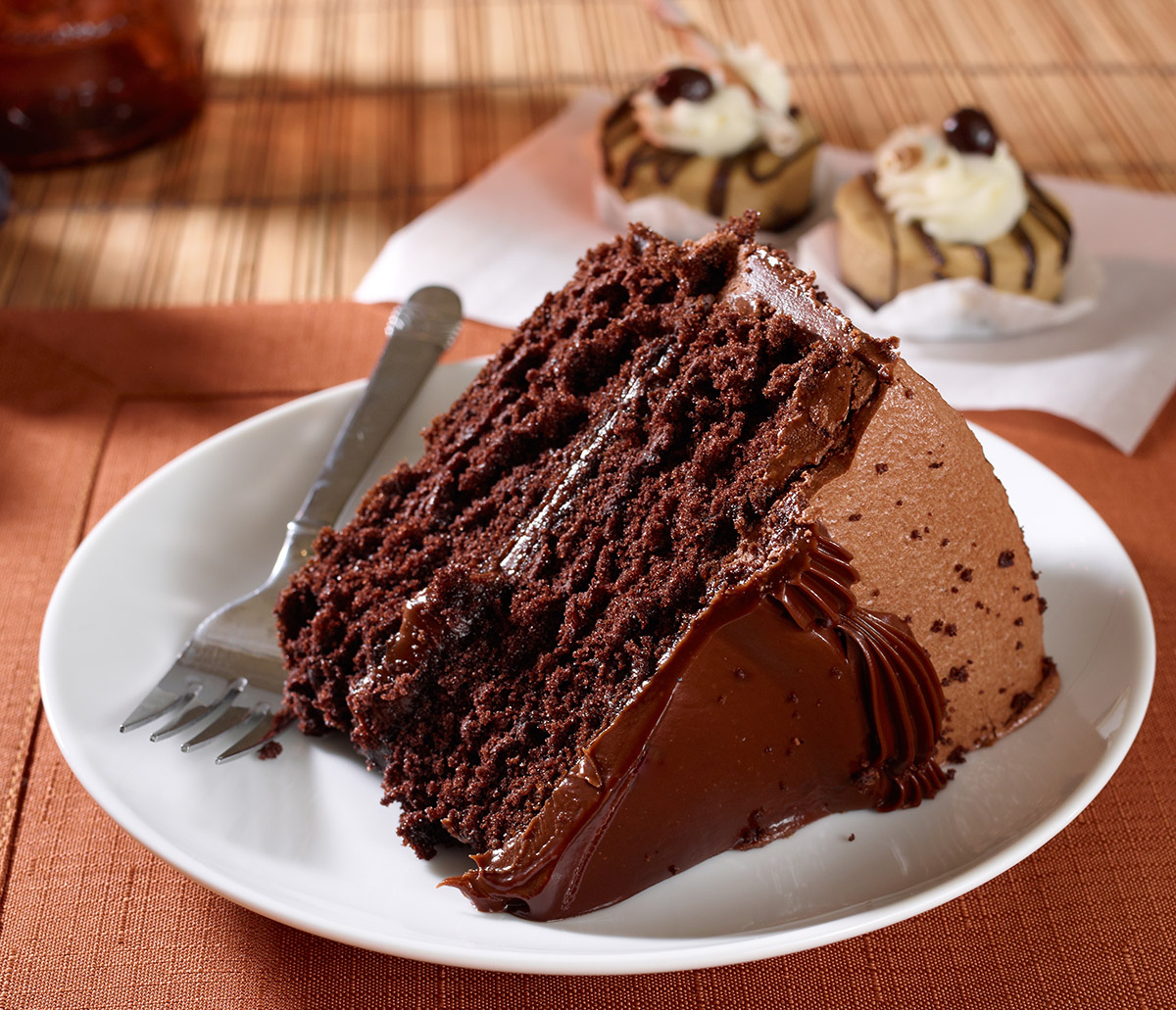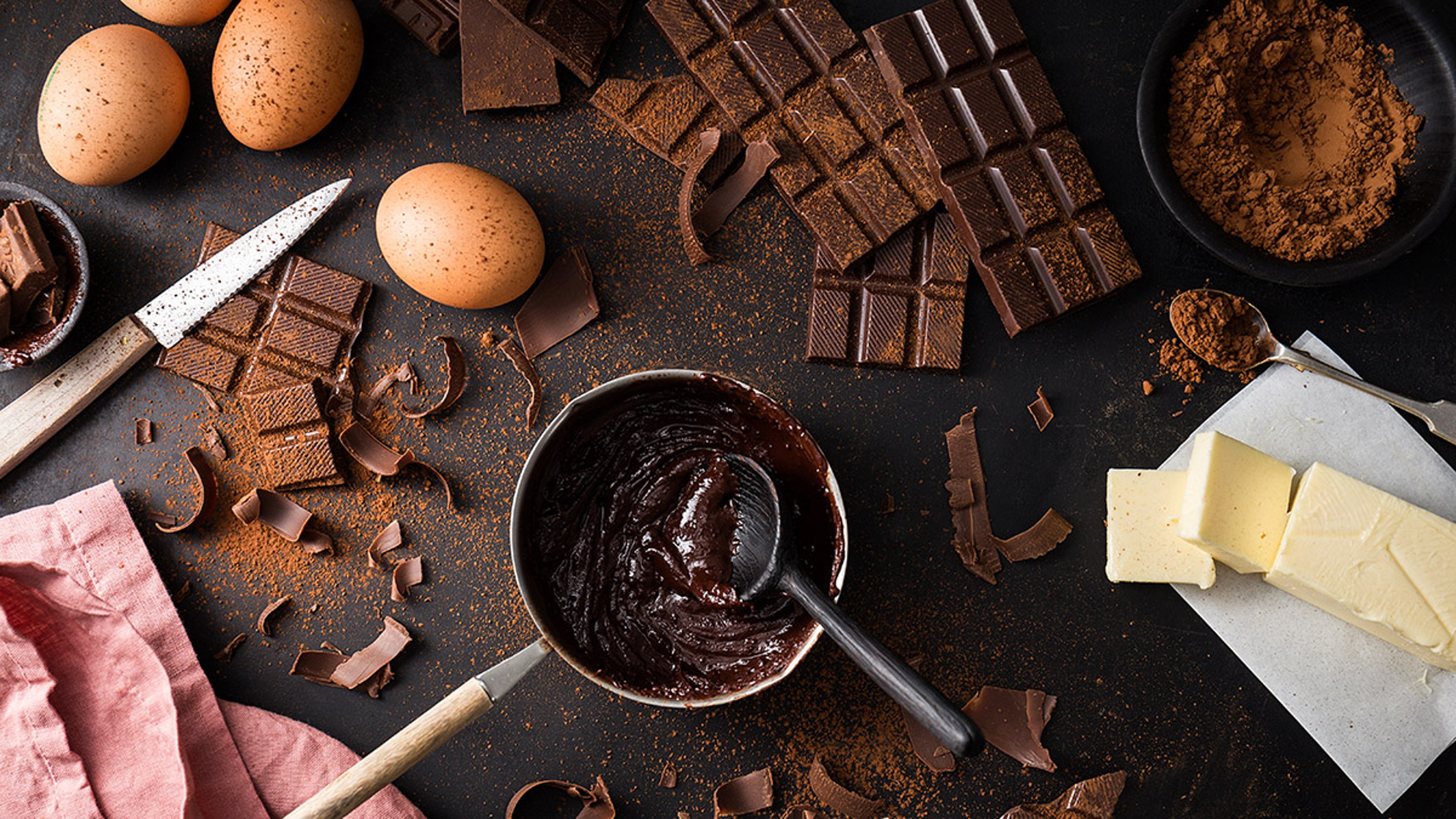Devil's Food Cake: The Inside Slice on How The Decadent Dessert Got Its Start
The origins of this rich, chocolatey treat are anything but angelic.
Apr 18, 2022
People have been baking cakes of one kind of another since the days of the Egyptian Pharaohs. It wasn't until the mid-1700s, however, that some ingenious chef thought to grind up a handful of cocoa beans and throw them into his cake batter, thus creating the early prototype of the rich chocolate cake flavor and appearance we know today.
Devil's food cake is an even more recent creation, dating back just over 120 years ago. That's when the first known recipe for the moist, rich dessert is believed to have been published, in the hugely influential “Mrs. Rorer's New Cook Book: A Manual of Housekeeping," which is still in print today. The recipe called for a somewhat stingy 2 ounces of melted unsweetened chocolate (perhaps because chocolate was so expensive at the time), plus the traditional sugar, eggs, milk, butter, and flour that still make up most modern devil's food cake recipes.
Fast forward to 2022 and chocolate cake, and devil's food cake in particular, remains an enduring favorite and one of the most popular cakes around. But despite our familiarity with the treat, it also still has a surprising amount of history — and mystery — packed into each and every rich, sweet, and earthy bite.
A battle of good versus evil

The bakers who created devil's food cake likely didn't set out with that goal in mind. In fact, the first chocolate cakes likely weren't even supposed to taste like chocolate!
According to food historian Stephen James Schmidt, bakers in the mid-to-late 1800s originally added cocoa powder to cakes simply to darken the color of their batter, not to add flavor. This decision was in response (some might say "retaliation") to the massive trend at the time of creating very white, light, and fluffy sponge cakes — the types of cakes so pure they seemed to be of “angelic origin" or could be considered food for angels (hence, “angel food").
Devil's food, or “Satan cake" as it was sometimes known, was meant to be that cake's polar opposite, Schmidt says. “A very dark cake — one so dark that it suggested some affiliation with the devil." Chefs originally used molasses and spice to create the effect but later found that cocoa powder was a much more effective darkener. “Taste was no doubt involved in this transposition, but the driving force was really color," Schmidt says.
Devil's food vs. red velvet vs. German chocolate
Despite sometimes similar appearances, all chocolate cakes are definitely not the same. Three, in particular, tend to get lumped in together: devil's food, red velvet, and German chocolate — but they have distinct differences, explains Marissa Velie, certification & education director for the Retail Bakers of America.
“Modern devil's food cakes are 'devilishly' chocolatey, and the rich, chocolate flavor and dense texture are the highlight," she says. “Red velvet cakes only have a small percentage of cocoa powder in the formula and are instead known for their bright red color. And German chocolate cake wouldn't be German chocolate cake without its layers of coconut and pecans."
Another difference? Unlike with the other two cakes, bakers can't even agree on a standard recipe for devil's food cake, according to Marie Loewen, a food scientist with the Blommer Chocolate Co., one of the largest chocolate-ingredient suppliers in the country.
“In my experience, there is not a consistent pattern of ingredients for a devil's food cake," Loewen says. “Unlike German chocolate cake, which is milk chocolate cake layers sandwiched with caramel coconut filling, or red velvet cake — buttermilk cake, dyed with food coloring, and a hint of cocoa powder — most devil's food cake recipes use a variety of chocolate and cocoa ingredients."
Finally, most devil's food cake contains a bit more baking soda than other types of chocolate cake, says Lisa Mansour, an award-winning expert in cake decorating and head of the NY Cake Academy. This baking soda raises the pH of the batter and creates more bubbles as the batter bakes, leading to a richer chocolate flavor, darker cake color, and fluffier cake texture overall.
Ingredients matter
When it comes to the best of the best devil's food cakes, one ingredient matters above all others according to Veille: high-quality chocolate.
“Since chocolate is the primary flavor profile in devil's food cake, the quality and type of chocolate used is essential for a great tasting final product," she says. “For me, that means Dutch process cocoa powder."

A type of unsweetened cocoa powder made from cocoa beans that have been rinsed to reduce their acidity, Dutch process cocoa powder is an uber-rich, dark, less bitter form of cocoa that gives cakes a darker color as well as a smoother, earthier chocolate flavor.
“I have also seen recipes where melted dark chocolate is used in addition to the cocoa powder for an even richer final product," Veille says. “Either way, the chocolate — whether its cocoa powder alone or a combination of both cocoa powder and melted chocolate — is crucial to making a good devil's food cake."
Next generation taste makers
Chocolate, along with vanilla, remains the most popular dessert flavor in the world, so it makes sense that devil's food should become a social media phenomenon and continue spreading its deliciousness to other products.
Last fall, a classic old school recipe titled “Nana's Devil's Food Cake" took Reddit and other social media sites by storm. The 80-year-old recipe combines cake essentials, including flour, eggs, milk, and oil, with cocoa and coffee. Like the COVID/sourdough craze before it, “Nana's" recipe had people across the country baking up all kinds of devilish sheet cakes, layer cakes, and bundt cakes.
And even before Nana's classic recipe was trending, a number of rich, chocolate-forward, sinfully sweet devil's food treats have become modern day dessert staples. There's devil's food muffins, devil's food pudding, Devil's Food Cheesecake, devil's food ice cream, devil's food pie, devil's food doughnuts, and, of course, Devil's Food Chocolate Frosted cookies, which are topped with white and dark chocolate chips. Each bite is like a mini frosted cake. Devilishly delightful!







